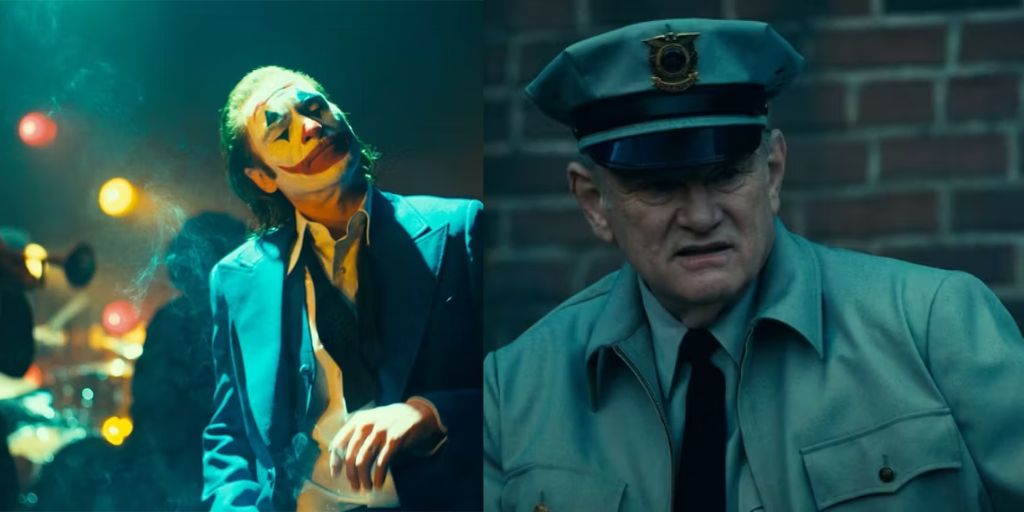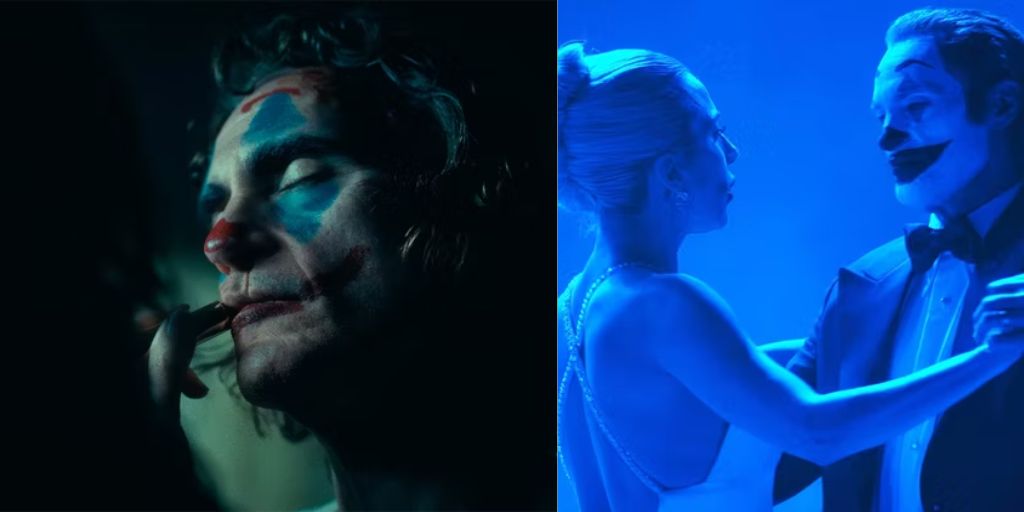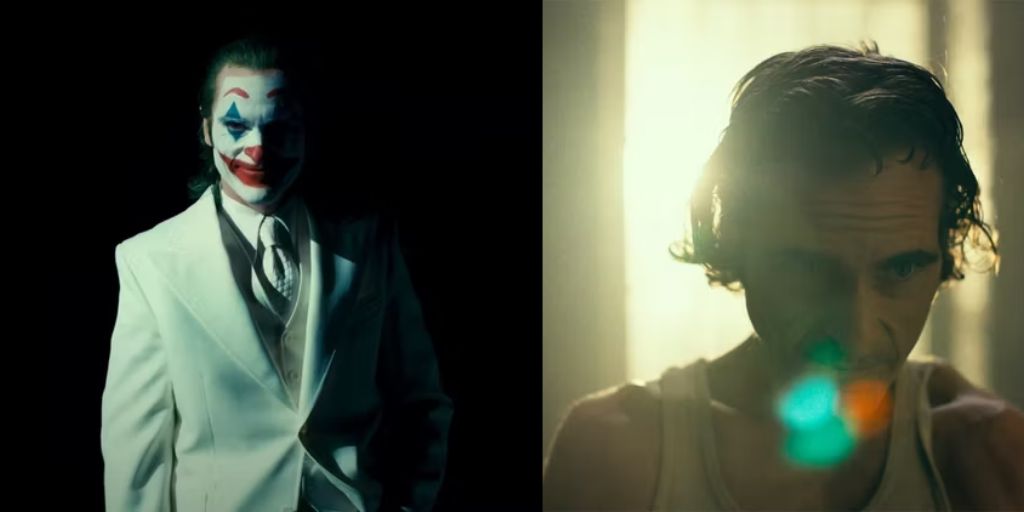The story of Joker: Folie à Deux has come to an end, bringing a unique close to this chapter of DC’s films. This movie is far from a typical sequel, which fits the style of Todd Phillips’ original Joker movie.
The film goes into the complexities of its characters and shows themes of mental health, love, and violence in a way that is both engaging and deeply unsettling. Joaquin Phoenix’s portrayal of the Joker has always aimed to present a more relatable and sympathetic view of this infamous villain, and Folie à Deux continues that scheme with new twists.
Joker: Folie à Deux expands on the character of Arthur Fleck, making him a more relatable person both within the film and in the eyes of the audience. The film is unique in that it includes musical elements while also telling a tragic love story between the Joker and Harley Quinn, played by Lady Gaga.
The pairing of these two characters creates an unexpected dynamic, emphasizing the contrasting personalities of Arthur and Harley. The film also emphasizes Arthur’s journey from an isolated, struggling individual to a figure who inspires chaos and love in equal measure.
The ending of the movie is tragic and surprising, not what many fans of the character might expect. Arthur’s journey throughout the film culminates in a series of confrontations that challenge his identity and morality. As he follows through the complexities of love and violence, he faces emotional and physical battles that push him to his limits.
Arthur Fleck Faces Gary Puddles in Joker: Folie à Deux
One of the first actions Arthur takes after fully embracing his Joker identity is becoming his own lawyer. This choice is not just a plot device; it signifies Arthur’s newfound confidence and control over his chaotic life.
He goes against Harvey Dent, an aggressive assistant district attorney, in a courtroom showdown that serves as a significant turning point in the film. This setting allows Arthur to question Harvey’s witnesses, and one witness is particularly shocking to him: Gary Puddles, a person he once considered a true friend.
Gary watched in horror as Arthur killed their coworker, Randall, who had mocked him too many times. While Arthur never harmed Gary physically, the experience left him deeply affected and traumatized.
Arthur initially approaches the cross-examination with a sense of humor, trying to lighten the mood by mimicking a Southern lawyer. This act of levity, however, soon turns serious as Arthur begins to realize the impact of his past actions on Gary.
During the cross-examination, it becomes clear that Gary’s trauma still haunts him. He has a deep emotional scar from witnessing the violent act, and this realization dawns on Arthur, affecting him profoundly.
Gary liked Arthur for who he was before the transformation into the Joker, and the weight of this friendship adds a layer of complexity to Arthur’s character.
Arthur is Attacked After Returning to Arkham
Arthur’s courtroom trial takes a dark turn when he makes some comments about the abusive guards at Arkham Asylum. His remarks do not sit well with the guards, particularly Jackie Sullivan, who is determined to teach Arthur a lesson.
This moment represents a significant shift in Arthur’s life, as he is no longer just facing the legal system but also the violent reality of his environment. The brutality of the guards reflects the themes of power and oppression that run throughout the film.
The guards take Arthur to the bathroom, and this scene becomes a tragic and shocking turning point for his character. They beat Arthur severely, and when Sullivan orders them to remove his trousers, the implication that Arthur was raped by the guards becomes clear.
This horrific act aligns with the abusive dynamics established earlier in the film, such as when the guards encouraged another patient to kiss Arthur as a form of humiliation. The film also hints at the abuse Arthur suffered at the hands of his mother, making this encounter with the guards an unbearable climax to his suffering.
Arthur’s psychological state deteriorates further due to the abuse he endures. His past traumas, compounded by the violence he experiences in Arkham, shape his identity and push him deeper into the persona of the Joker. The film highlights the impact of institutional abuse and the long-lasting effects it can have on a person’s mental health.
Arthur Admits His Crimes and Rejects His Joker Identity
The next day in court, Arthur arrives as a changed man. The charismatic clown persona that once defined him is gone, replaced by a broken individual. He claims that the Joker is not an alternate persona but who he truly is. This admission serves as a poignant reflection of his internal struggles and the irreversible changes he has undergone.

Arthur’s revelation breaks Harley’s heart, leading her and the other supporters of the Joker to leave the courtroom in disappointment.
They had believed in Arthur’s vision of the Joker as a liberating figure, but now they see a man who has lost himself. Despite his reasons for his statements, the grand jury finds Arthur guilty of multiple murders, sealing his fate in the eyes of the law.
As Arthur’s mental condition worsens, he begins to laugh uncontrollably in the courtroom. This moment of uncontrollable laughter is both a defense mechanism and a sign of his deep emotional pain.
The chaos intensifies when a bystander, overwhelmed by the situation, loses control, and the courtroom erupts into chaos after a car bomb explodes, destroying a section of the building.
Harley Ends Things with Arthur
The explosion creates panic, and Arthur is disoriented as he tries to find a way to escape the chaos. He finds a way out through the giant hole left by the explosion, which symbolizes his fractured state of mind.
As he goes through the wreckage, he passes by Harvey Dent, who has now acquired the half-scarred face that his comic counterpart, Two-Face, is known for. This visual element ties Arthur’s story to the larger Batman universe, further complicating his identity.
Arthur is picked up by two supporters of the Joker who claim responsibility for the bombing, but he manages to escape their clutches in search of Harley. When he finally finds her, the reunion is bittersweet. Harley has changed, not only in appearance with her new haircut but also in her feelings for Arthur.
Her earlier promise to move into Arthur’s old apartment becomes meaningless as she realizes that his claim about the Joker being unreal signals a major shift in their relationship.
The moment Arthur renounces his Joker persona is a turning point for Harley. Despite the possibility of her being pregnant with Arthur’s child, she decides to leave him behind on the stairs where he once danced joyfully. This act symbolizes the end of their romantic relationship and the disintegration of the dream they once shared.
Arthur is Apparently Stabbed to Death in the Finale of Joker: Folie à Deux
As the film nears its end, it seems that Arthur’s story is coming to a tragic close. A guard informs him that he has a visitor, which raises questions about who it could be.

Arthur wonders if it could be Harley seeking reconciliation or Gary wanting to reconnect. However, his hopes are dashed when he faces a cruel fate at the hands of another patient who wants to tell him a joke.
In a shocking twist, Arthur is stabbed repeatedly in the stomach by this patient. As he bleeds out on the floor, the other patient laughs hysterically, creating a haunting scene that reflects the film’s themes of madness and chaos. The patient begins to carve a smile onto his own face with the knife, an act that serves as a disturbing nod to Heath Ledger’s Joker from The Dark Knight.
This moment suggests that the Joker who will ultimately confront Batman is not Arthur Fleck. If this is truly the final chapter of Arthur’s saga, then his journey becomes one of inspiration rather than the legacy of chaos.
The Joker may live on, but Arthur’s story highlights the complexities of mental illness, societal neglect, and the search for identity in a world that often feels hostile and unforgiving.
Joker: Folie à Deux presents a haunting scheme of the human psyche. It goes into the depths of despair and illustrates how love, trauma, and identity intertwine in the lives of its characters.
Arthur Fleck’s tragic journey serves as a powerful reminder of the impact of violence and abuse, leaving viewers with a lingering sense of sadness and reflection on the nature of the Joker’s legacy.

Joker: Folie à Deux concludes with Arthur Fleck’s tragic journey as he embraces his identity as the Joker. The film highlights his complex relationships, especially with Harley Quinn, while showing themes of trauma and abuse. Arthur faces brutal treatment from guards at Arkham, ultimately leading to his downfall.
The shocking ending hints that the Joker’s legacy continues beyond Arthur, emphasizing the impact of violence and the struggle for identity.




